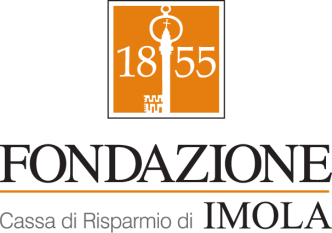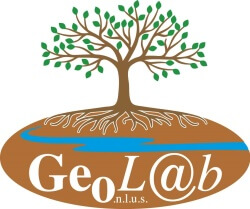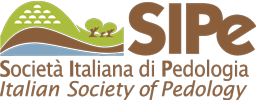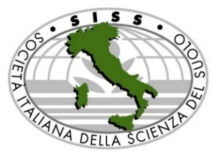Spatiotemporal zoning of groundwater quality in Rechna Doab: analysis of Electrical Conductivity (EC), Sodium Adsorption Ratio (SAR), and Residual Sodium Carbonate (RSC) variability
DOI:
https://doi.org/10.6092/issn.2281-4485/21146Keywords:
water quality , interpolation, inverse distance weighted, geo-statistical, GIS, pre-monsoon, post-monsoonAbstract
Groundwater quality is essential for sustaining human and plant life, as its degradation can harm vital organisms critical for ecosystem balance. GIS-based models have proven effective in large-scale water quality zoning, offering precise and efficient management tools. Therefore, present study was designed with objective of water quality zoning in Rechna doab. This study analyzed borehole data from 1,130 wells across the Rechna Doab region, collected from 2006 to 2019 during pre-monsoon (June) and post-monsoon (October) seasons. Key water quality parameters, including electrical conductivity (EC), sodium adsorption ratio (SAR), and residual sodium carbonate (RSC), were interpolated using the inverse distance weighted (IDW) method in GIS. The results revealed that during the pre-monsoon season, 7.94% of the area exhibited poor water quality, 58.90% marginal, and 33.16% good quality. In the post-monsoon season, these values shifted to 11.65% poor, 52.43% marginal, and 35.93% good quality zones. Geo-statistical validation using semi-variogram and kriging demonstrated high model accuracy, with mean error (ME) and mean square error (MSE) values near zero. Additionally, root mean square error (RMSE) closely matched average standard error (ASE), though root mean square standardized error (RMSSE) values greater than 1 indicated overestimation for EC, SAR, and RSC. The study concluded that groundwater quality in Rechna Doab is deteriorating over time and recommends adopting artificial groundwater recharge and conservation strategies to preserve water quality.
References
ABBAS M., ALEEM M., ALTAF A., AKRAM M.W., BUTTER N.A., RAZA H.A. (2023) delineation of water quality aspects through water quality index using GIS and statistical approach in Faisalabad. Journal of Global Innovations in Agricultural Sciences, 11(1):7.
https://doi.org/https://doi.org/10.22194/JGIAS/11.1010
ABBAS M., ARSHAD M., SHAHID M.A. (2023) Zoning of groundwater level using innovative trend analysis: Case study at Rechna Doab, Pakistan. Water Resources and Irrigation Management, 12(1-3):64-80.
https://doi.org/10.19149/wrim.v12i1-3.3155
ABBAS M., BAKHSH A., ALEEM M., ASHRAF M., IDREES M.B., BUTTAR N.A. (2017) Maize productivity analysis under drip irrigation and bed planting. Journal of Global Innovations in Agricultural and Social Sciences, 5:32-38. https://doi.org/10.22194/JGIASS/5.1.780
ABEED A.T., LAZIM S.A., HAMIED R.S. (2019) Mode-ling of petrophysical properties and reserve estimation of Mishrif Formation-Garraf oil field. IOP Conference Series: Materials Science and Engineering, 579:12-37.
https://doi.org/10.1088/1757-899X/579/1/012037
AHN H.I., CHON H.T. (1999) Assessment of ground- water contamination using geographic information systems. Environmental Geochemistry and health, 21(3):273-289.
https://doi.org/10.1023/A:1006697512090
ASLAM M., ARSHAD M., SINGH V.P., SHAHID M.A.
(2022) Hydrological Modeling of Aquifer’s Recharge and Discharge Potential by Coupling WetSpass and MOD- FLOW for the Chaj Doab, Pakistan. Sustainability, 14(8): 4421. https://doi.org/10.3390/su14084421
ASLAM M.A., ARSHAD M., SHAKOOR A., CHEEMA
M.J.M., WARAICH E.A. (2021) Sensor based efficient surface irrigation system for improving water productivity using experimental and modelling techniques. Pakistan Journal of Agricultural Sciences, 58(2), 655-666.
https://doi.org/ 10.21162/PAKJAS/21.1092
BOHLING G. (2005) Introduction to geostatistics and variogram analysis. Kansas geological survey, 1(10):1-20.
https://iicseonline.org/Numerical_Methods_and_Geostatistics_1.pdf
BOUAROUDJ S., MENAD A., BOUNAMOUS A., ALI- KHODJA H., GHERIB A., WEIGEL D.E., CHENCHO-
UNI H. (2019) Assessment of water quality at the largest dam in Algeria (Beni Haroun Dam) and effects of irrigation on soil characteristics of agricultural lands. Chemosphere, 219:76-88. https://doi.org/10.1016/j.chemosphere.2018.11.193
BRINDHA K., KAVITHA R. (2015) Hydrochemical as- sessment of surface water and groundwater quality along Uyyakondan channel, south India. Environmental Earth Sciences, 73(9):5383-5393.
https://doi.org/10.1007/s12665-014-3793-5
DELGADO C., PACHECO J., CABRERA A., BATL-LORI E., ORELLANA R., BAUTISTA F. (2010) Quality of groundwater for irrigation in tropical karst environment: The case of Yucatan, Mexico. Agricultural water management, 97(10):1423-1433.
https://doi.org/10.1016/j.agwat.2010.04.006
ENGEL B.A., JANG W.S., LIM K.J., NAVULUR K.C.,
THELLER L. (2016) The role of geographical information systems in groundwater engineering. In The handbook of groundwater engineering (pp. 969-990). CRC Press.
ESRI R. (2011) ArcGIS desktop: release 10. Environmental Systems Research Institute, CA.
https://demo.bco-dmo.org/publication/887395
HOURIA B., MAHDI K., ZOHRA T.F. (2020) Hy-dro- chemical characterisation of groundwater quality: Mer-dja plain (Tebessa town, Algeria). Civil Engineering Journal, 6(2):318-325. https://doi.org/10.28991/cej-2020-3091473
HUDAK P.F. (2000) Distribution and sources of arsenic in the southern high plains aquifer, Texas, USA. Journal of Environmental Science and Health Part A, 35(6):899-913.
https://doi.org/10.1080/10934520009377010
ILIĆ M., VRANEŠEVIĆ M., BEZDAN A., BLAGO-JEVIĆ, B. (2019) Classification of Water Quality of Banat Watercourses in Serbia for the Needs of Irrigation. Journal of Environmental Geography, 12(1-2):51-57.
https://doi.org/10.2478/jengeo-2019-0006
IRFAN M., ARSHAD M., SHAKOOR A., ANJUM L. (2014) Impact of irrigation management practices and water quality on maize production and water use efficiency. Journal of Animal and Plant Sciences, 24(5). ISSN:1018-7081.
ISMAIL S., AHMED M.F. (2021) GIS-based spatio-tem-poral and geostatistical analysis of groundwater parameters of Lahore region Pakistan and their source characterization. Environmental Earth Sciences, 80(21):719.
https://doi.org/10.1007/s12665-021-10034-9
KHAN S., ULLAH Q., KHAN A.A., HASSAN S.S., SHAKOOR A., IJAZ M. (2022) Geostatistical investigation of groundwater quality zones for its applications in irrigated agriculture areas of Punjab (Pakistan). Environmental Earth Sciences, 81(3):91.
https://doi.org/10.1007/s12665-022-10209-y
LESCH S., SUAREZ D. (2009) A short note on calculating the adjusted SAR index.
LI X., LI J., XI B., YUAN Z., ZHU X., ZHANG X. (2015) Effects of groundwater level variations on the nitrate content of groundwater: a case study in Luoyang area, China. Environmental Earth Sciences, 74(5):3969-3983. https://doi.org/10.1007/s12665-015-4016-4
MOHAMMADI A., RAFIEE S., MOHTASEBI S.S., RAFIEE H. (2010) Energy inputs – yield relationship and cost analysis of kiwifruit production in Iran. Renewable Energy, 35(5): 1071-1075.
https://doi.org/https://doi.org/10.1016/j.renene.2009.09.004
PHAM B.T., HOANG T.A., NGUYEN D.M., BUI D.T.
(2018) Prediction of shear strength of soft soil using machine learning methods. Catena, 166:181-191.
https://doi.org/10.1016/j.catena.2018.04.004
PIMENTEL D., BERGER B., FILIBERTO D., NEW- TON M., WOLFE B., KARABINAKIS E., NANDA-GO
GOPAL S. (2004) Water resources: agricultural and environmental issues. BioScience, 54(10):909-918.
https://doi.org/10.1641/0006-3568(2004)054
RIAZ U., ABBAS Z., MUBASHIR M., JABEEN M., ZULQADAR S.A., JAVEED Z., QAMAR M.J. (2018) Evaluation of ground water quality for irrigation purposes and effect on crop yields: A GIS based study of Baha-walpur. Pakistan Journal of Agricultural Research, 31(1). http://dx.doi.org/10.17582/journal.pjar/2018/31.1.29.36
SADAT-NOORI S.M., EBRAHIMI K., LIAGHAT A.M. (2014) Groundwater quality assessment using the Water Quality Index and GIS in Saveh-Nobaran aquifer, Iran. Environmental Earth Sciences, 71(9): 3827-3843.
https://doi.org/10.1007/s12665-013-2770-8
SEDDIKI A., DEHIMI S. (2023) Effect of choosing a variogram model to predict salinity and its impact on the environment and geotechnical structures. Technium Social Sciences Journal, 39(1):860-872.
https://doi.org/10.47577/tssj.v39i1.8314
SHAKOOR A., KHAN Z.M., FARID H.U., SULTAN M., AHMAD I., AHMAD N., ALI M.U. (2020) Delineation of regional groundwater vulnerability using DRASTIC model for agricultural application in Pakistan. Arabian Journal of Geosciences, 13(4):1-12. https://doi.org/10.1007/s12517-020-5161-y
TIWARI A.K., SINGH A.K., SINGH A.K., SINGH M. (2017) Hydrogeochemical analysis and evaluation of surface water quality of Pratapgarh district, Uttar Pradesh, India. Applied Water Science, 7(4):1609-1623.
https://doi.org/10.1007/s13201-015-0313-z
WEBSTER R., OLIVER M.A. (2007) Geostatistics for environmental scientists. John Wiley & Sons.
https://doi.org/10.1002/9780470517277
ZAMAN M., SHAHID S.A., HENG L. (2018) Guideline for salinity assessment, mitigation and adaptation using nuclear and related techniques. Springer Nature. https://doi.org/10.1007/978-3-319-96190-3_1
Downloads
Published
How to Cite
Issue
Section
License
Copyright (c) 2025 Muhammad Abbas, Muhammad Arshad, Muhammad Adnan Shahid

This work is licensed under a Creative Commons Attribution 4.0 International License.









